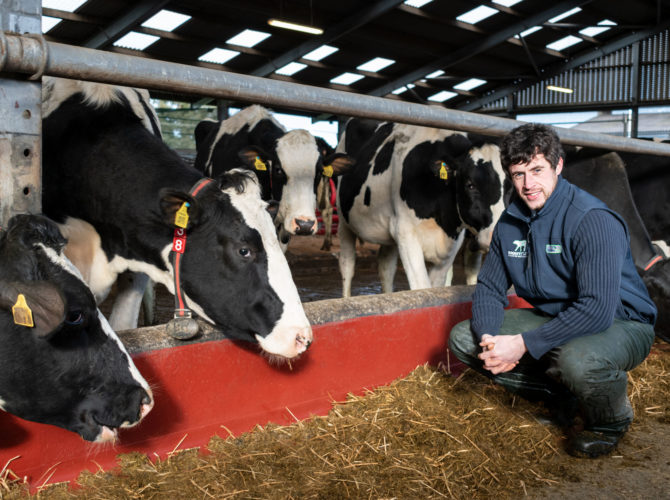Improving Dry Cow Transition to Maximise Lactation Performance.
26th August 2021

Improving efficiency on dairy farms is the key message from Fane Valley Feeds this autumn. Ensuring that every step of production on your farm is efficient and therefore achieving results will help to withstand current market pressure from increased grain prices.
Fane Valley Feeds’ Dry Cow Primer rations have been designed to balance 2021 grass silages, ensuring a smooth transition to lactation. As a lot of farms have already started calving cows and heifers, Matthew Armstrong Technical Support Manager at Fane Valley Feeds outlines some of the key factors to ensure dry cows receive adequate nutrition and the best possible transition to lactation – eliminating problems that impact on production, fertility or health performance.
Body Condition Score
One of the best management tools to reduce metabolic issues is regular body condition scoring. Body condition score cannot be changed successfully during the dry period and should therefore be altered before drying off by physically assessing individual cows 8 to 10 weeks before planned dry off. Cows should be dried off at a BCS 3.0 and this should be maintained throughout the dry period. Cows that are not at this target BCS should be identified and then fed accordingly.
Cows that are either too thin or too fat at calving can have higher rates of;
• Metabolic disease
• Lower feed intakes
• Lower milk production;
• Poorer fertility;
Nutrition
Dry cows should be fed to meet their energy requirements and maximise rumen fill. Feeding excess energy should be avoided as it can lead to fatty liver syndrome and ketosis, causing lower feed intakes after calving and metabolic diseases. Adding straw to the dry cow diet can help to improve rumen fill and dilute both energy density and potassium intakes, however this will only work successfully in a TMR system where straw sorting is prevented. It is vital that adequate feed space is available for all cows and feed is provided fresh on a daily basis.
Where dry cows are at grass, cows should be batched according to calving date with cows that are 4 to 8 weeks pre-calving grazing the aftermath of the lactating herd to limit excess energy intakes. As fresh grass is very high in calcium, dry cow intakes of fresh grass should be limited in the weeks before calving. Cows that are between 4 weeks pre-calving and the point of calving should be housed full-time on a ration such as that discussed above. The starting point of any dry cow diet is a full mineral profile of the forages to be used. Silages with high levels of potassium can cause problems with milk fever and subclinical milk fever, and if identified early, can be eliminated via nutrition, allowing a smoother transition to lactation.
Fane Valley Feeds Dry Cow Primer Nuts
Benefits of feeding Fane Valley Dry Cow Primer Nuts for 4 weeks Pre calving at a rate of 2kg/h/day:
- 24% crude protein – with high inclusion of soya providing elevated levels of bypass protein, helping regenerate udder cells pre calving.
- Elite Mineral Spec – High levels of Vitamins E, A, D3, B12, iodine, cobalt and chelated selenium, copper and zinc.
- Actisaf –to maximize rumen function and fibre digestion.
- Safmannan – supports the cow’s immune system and increases immunoglobulin concentration in colostrum.
- Magnesium Chloride – anionic salts can help to achieve a ‘partial DCAB’ diet and reduce the incidence of both clinical and subclinical milk fever.
If you would like to know more about Fane Valley Feeds Dry Cow Primer Nuts and options for managing the nutrient intake of dry cows, please contact your local Fane Valley Feeds Sales Representative or Dr David Johnston on 028 8224 3221.


